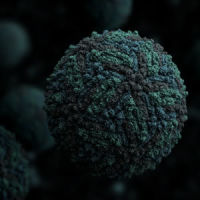According to findings published in Nature Communications, a new technology can harness imperfections that typically compromise MRI exams to create images resolved enough to enable consistent diagnosis.
Despite the fact that MRIs have been in use for decades and have enabled physicians to look inside tissues, diagnose maladies from brain tumour to internal bleeding to torn ligaments, MRIs have one basic problem. During an MRI scan, antennas hit the atoms making up tissues with radio waves that tip them out of their magnetic equilibrium. Sometimes, MRI radio waves light up some parts of a sample better than others while some areas are blocked out. Effort has been made to work towards uniform exposure but even today, some MRI exams yield darkened artifacts.
"The advances outlined in our study eliminate artifacts and create images accurate enough that we can now assign numerical values to anatomical features," says study author Daniel Sodickson, MD, PhD , professor in the Department of Radiology , member of the Perlmutter Cancer Center at NYU Langone, and director of the Bernard and Irene Schwartz Center for Biomedical Imaging . "This marks the advent of 'quantitative MRI,' where new kinds of tissue maps become the gold standard for diagnoses and reveal disease patterns that are consistent from patient to patient,"
The new technology called "Plug-and-Play MR Fingerprinting (PnP-MRF) requires zero calibration and can effectively map the distortions that occur as MR radio waves interact with tissue. Where MRF used a single source of radio wave pulses to generate signals, PNP-MRF is a circling strobe light of many broadcast magnetic fields, hitting the atoms from different directions separated by milliseconds to create a new kind of fingerprint. An artifact introduced by any one radio wave pulse may show a dark spot in one version of an image, but not in the same place in all data sets, enabling the dismissal of errors.
Source: NYU Langone Medical Center
Image Credit: Anderw Neary
Latest Articles
MRI, MRF, quantitative MRI, PNP-MRF
According to findings published in Nature Communications, a new technology can harness imperfections that typically compromise MRI exams to create images resolved enough to enable consistent diagnosis.



























